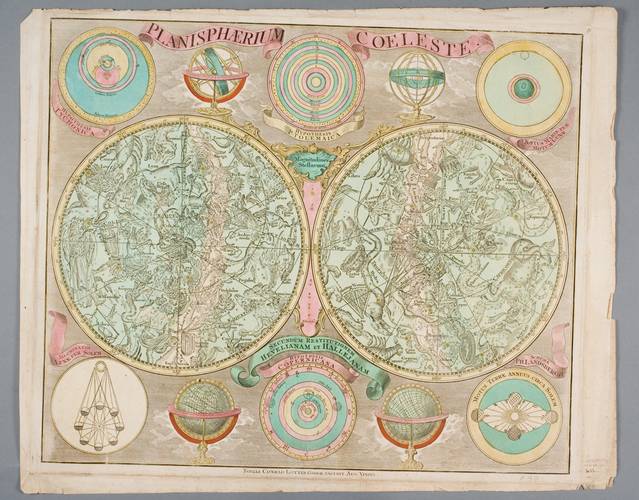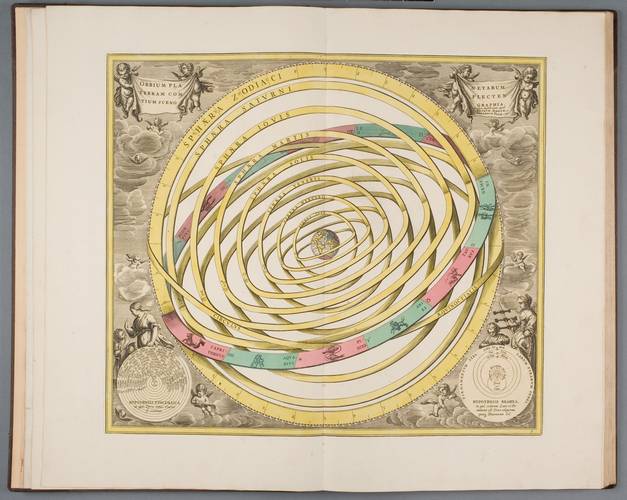C. Ptolemy system
Claudius Ptolemy’s geocentric solar system model
C. Ptolemaeus (II c.) asserted that the Earth is the centre of the system of celestial bodies. According to his model each planet moves in small circles – epicycles whose centres revolved around the Earth in larger orbits – deferents.
The Earth is at the centre of the universe. The Sun and the Moon revolve in deferents The Moon revolves closest to the Earth, further on – Mercury, Venus, the Sun, Mars, Jupiter, Saturn and lastly everything is enveloped by the sphere of stars. Planets that are below the Sun were called lower, while those that are above the Sun were called upper. Such model of the universe model persisted until the middle of XVI c. albeit it has already become too complicated as astronomers tried to eliminate inaccuracies which occurred in the process of calculations of planets and movement of the Sun according to this model, and added new epicycles (e.g.: to explain Mars movement in XIII c. even 22 epicycles were necessary)

